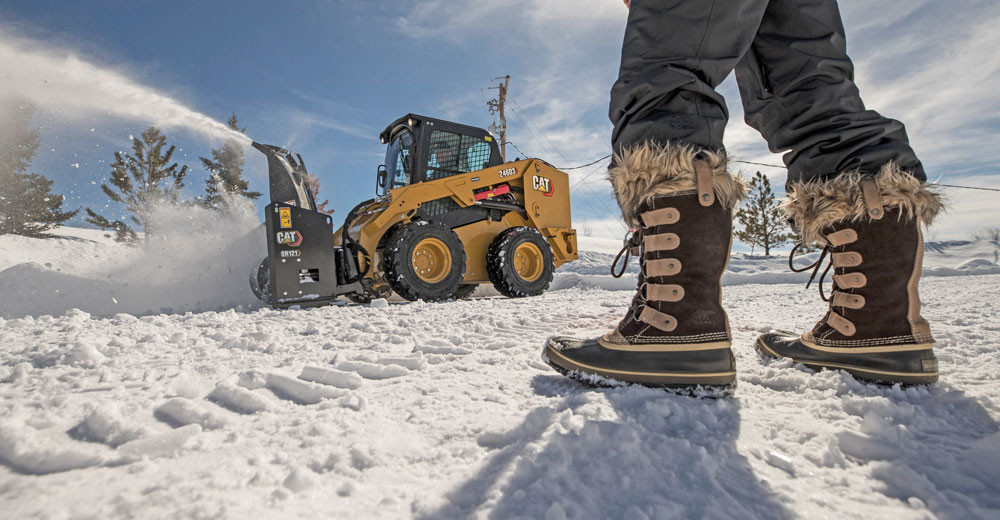13th Feb 2021
Cold weather
does funny things to construction equipment. If you plan to operate your skid
steer throughout the winter, here are a few tips to keep in mind when preparing
for cold weather. There are many cold starting options for skid steers,
including glow plugs, block heaters, grid heaters and starting fluid (ether).
We recommend and build glow plugs into our skid steers, which are more
efficient at heating the cylinders for better starts. Other solutions will work
as well, but it’s important to note that ether can be particularly harsh on the
engine if used excessively.
If you do have a skid steer with glow plugs, do not turn the engine until the
glow plug indicator on your control panel has gone out. That light indicates
that it is still heating and is only ready to crank when the light goes out.
The battery is another critical factor. Perform a load test on the battery
before the cold weather hits to ensure it operates at full strength under load.
A strong battery will have sufficient amps to crank the starter in cold
temperatures. Replace a weak battery before getting caught short. Keep a
trickle charge on the battery if necessary to ensure it remains fully charged
and ready to crank the engine. Perhaps equally as important is the location of
the battery. Battery placement closer to the starter allows for a shorter
battery cable and less draw on the battery.
Some skid steer models also offer a master electrical shut-off switch (standard
on Case machines). This prevents any draw from occurring when sitting idle —
important during winter months. It’s important to check both the level and the
condition of engine coolant, which lowers the freezing point of water-based
liquid. Ensure the coolant is at the proper level and that the mixture matches
the manufacturer’s specifications. The coolant system should also be
pressure-tested.
Lighter viscosity engine/hydraulic oil is typically recommended during winter
months. It allows the oil to flow more quickly to the engine when it’s
cold-started. Specially formulated engine and hydraulic oils are also available
for operation in the northernmost regions with extremely cold temperatures
(Canada, Alaska, the U.S. northern plains). Users should consult manufacturers’
recommendations when selecting coolants and oils for winter operation.
Companies that plan on operating throughout the winter should also top off the
fuel tank at the end of each day to prevent condensation.
Keeping all grease points well greased helps keep out moisture and dirt and
prevents rust, freezing and seizing. These points should be checked daily. If
you do plan periodic use throughout the winter, but do not intend on shutting
it down completely, make sure to take the machine out and exercise it every
couple of weeks to get all of the fluids moving and to ensure all systems are
working.
Are you shutting down till spring? Your operator’s manual will provide you with
a very specific procedure for shutting down your skid steer for the winter.
Each model is different — especially as machines evolve from carbureted to fuel
injection systems. Follow these procedures to the letter and you’ll be ready
for the thaw.
Warren Anderson is a brand marketing manager with Case Construction Equipment,
based in, Racine, Wis.



